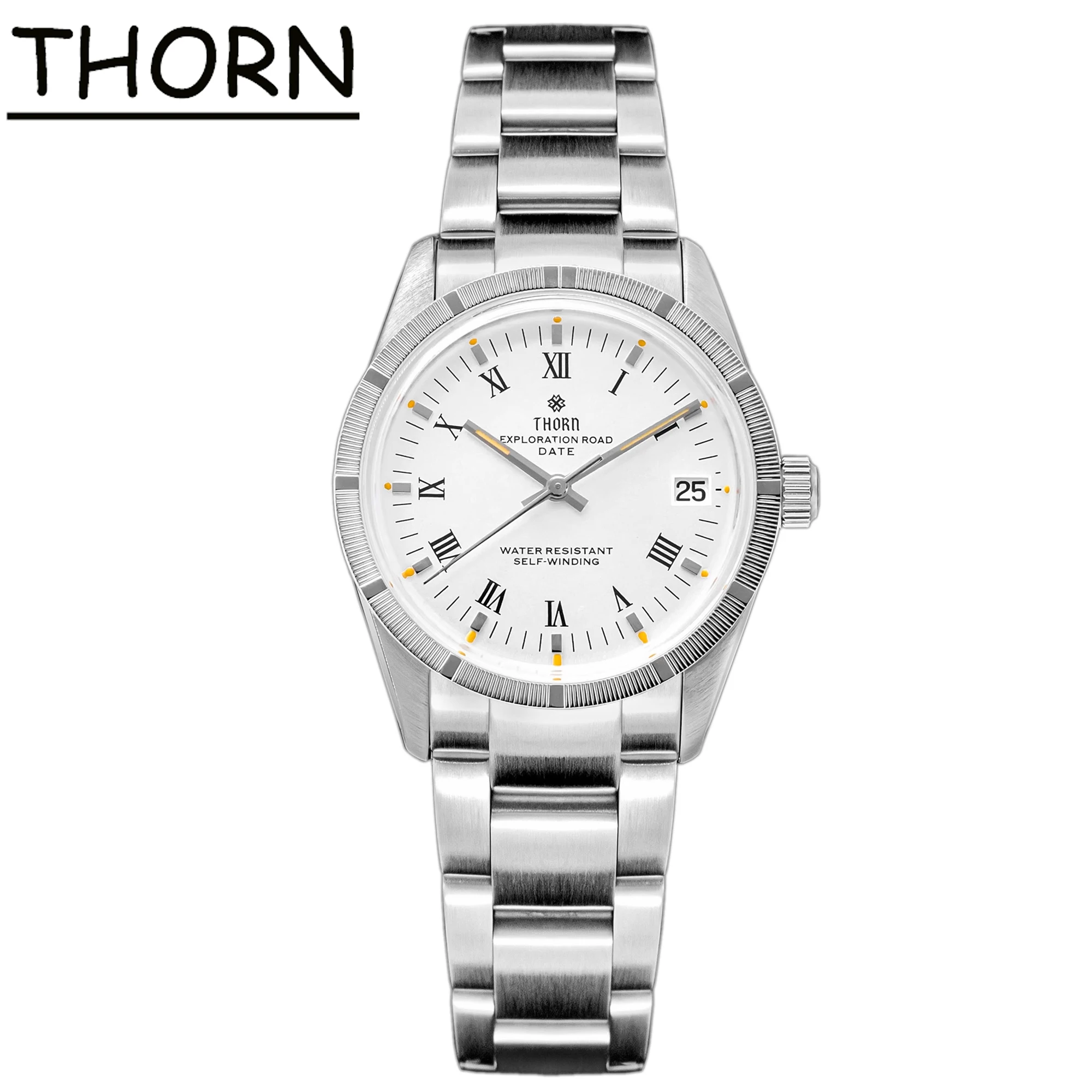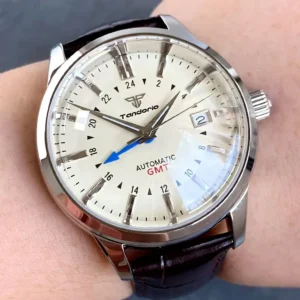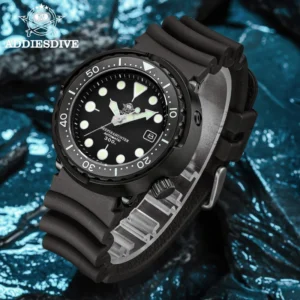The Early Beginnings of Water-Resistant Watches
Long before modern dive watches existed, watchmakers recognized the need for timepieces that could withstand water exposure. Early attempts at water resistance appeared in pocket watches, where craftsmen experimented with sealed cases to protect delicate movements from moisture and dust. These pioneering designs laid the groundwork for what would eventually become dedicated diving instruments.
The transition from pocket to wristwatch during World War I accelerated water-resistant innovation. Soldiers needed timepieces that could withstand harsh battlefield conditions, including exposure to water and mud. This practical demand drove manufacturers to develop more robust sealing systems.
The true breakthrough came in 1926 with the introduction of Rolex’s Oyster case. This revolutionary design featured a screw-down case back and crown, creating a hermetically sealed environment for the movement. To prove its effectiveness, the watch famously accompanied Mercedes Gleitze during her English Channel swim, emerging in perfect working condition after hours in cold seawater.
Another significant advancement was the development of automatic winding mechanisms. These self-winding movements eliminated the need for frequent crown manipulation, significantly reducing one of the most common points of water entry. Omega’s contribution came with the rectangular Marine model in 1932, which used an innovative double-case system specifically tested for underwater use.
These early innovations addressed the fundamental challenges of dive watch engineering – keeping water out while maintaining functionality and accuracy. Each development built upon previous successes, gradually establishing the technical foundation for purpose-built diving instruments that would emerge in the following decades. The evolution of professional diving watches from these humble beginnings represents one of horology’s most fascinating technological journeys.
The Birth of Modern Dive Watches in the 1950s
The post-World War II era witnessed an explosion of interest in underwater exploration, fueled by innovations in scuba equipment and popularized by pioneers like Jacques Cousteau. This newfound accessibility to underwater environments created an urgent need for specialized timepieces designed specifically for divers.
The period between 1953 and 1954 is often called the “Year of the Dive Watch” for good reason. Three revolutionary models emerged almost simultaneously, each establishing design elements that would define dive watches for generations:
Landmark Models That Set the Standard
The Blancpain Fifty Fathoms, introduced in 1953, featured a large rotating bezel with minute markings and high-contrast luminous indices. Developed in collaboration with French combat swimmers, it prioritized legibility and reliability under extreme conditions. Most importantly, its rotating bezel allowed divers to track elapsed time underwater – a potentially life-saving feature.
The Rolex Submariner, also from 1953, brought similar functionality with its own innovations. Its robust oyster case provided exceptional water resistance, while the design balanced utility with versatile aesthetics that would later make dive watches popular beyond professional use.
Completing this pioneering trio, the Zodiac Sea Wolf offered similar capabilities at a more accessible price point, helping to democratize dive watch ownership among recreational divers and enthusiasts.
Defining Features Established
These early dive watches established key characteristics that remain essential today:
- Unidirectional rotating bezels (a safety feature ensuring divers could only underestimate remaining air)
- High-contrast dials with substantial luminous markers
- Robust water resistance (typically 100m or greater)
- Secure strap attachments to prevent watch loss during dives
The military connection proved crucial to dive watch development. Armed forces provided rigorous testing environments and established specific requirements that drove innovation. These specifications often became industry standards, influencing watch design far beyond military applications.
This period represents when dive watches truly came into their own as a distinct category of timepiece. The timeline of diving watch innovations that followed built upon these foundational designs, many of which are still celebrated in classic style dive watches available today.
Bezel Innovations: From Simple Timers to Complex Instruments
The rotating bezel stands as perhaps the most defining visual and functional element of a dive watch. What began as a simple timing device has evolved into a sophisticated instrument with numerous variations and technological improvements.
Early dive watch bezels featured basic elapsed time markings, allowing divers to monitor how long they had been submerged. The critical safety innovation came with the introduction of the unidirectional bezel, which could only rotate counterclockwise. This prevented accidental movement that might underestimate dive time, potentially leading to dangerous situations like air depletion or decompression sickness.
Evolution of Bezel Functionality
As diving techniques advanced, bezel designs evolved to incorporate specialized scales:
- Standard elapsed time bezels with minute markings
- No-decompression limit scales showing safe dive times at various depths
- Countdown bezels with reversed numerals for mission-specific timing
- GMT bezels combining dive timing with additional timezone tracking
Material Advancements
Bezel materials have undergone dramatic improvement over decades:
- Early aluminum inserts offered good visibility but were prone to scratching and fading
- Acrylic bezels provided impact resistance but scratched easily
- Modern ceramic bezels deliver exceptional scratch resistance and color stability
- Sapphire crystal bezels combine durability with the ability to incorporate luminous markers
Bezel security mechanisms represent another area of significant development. From simple friction-based systems, manufacturers developed ratcheting mechanisms with increasingly precise clicks. Some designs incorporated locking systems requiring deliberate pressure or rotation to prevent accidental adjustment during dives.
Alternative approaches include internal rotating bezels controlled by separate crowns, offering enhanced water resistance by eliminating another potential entry point through the case. This design creates a cleaner aesthetic while maintaining full functionality.
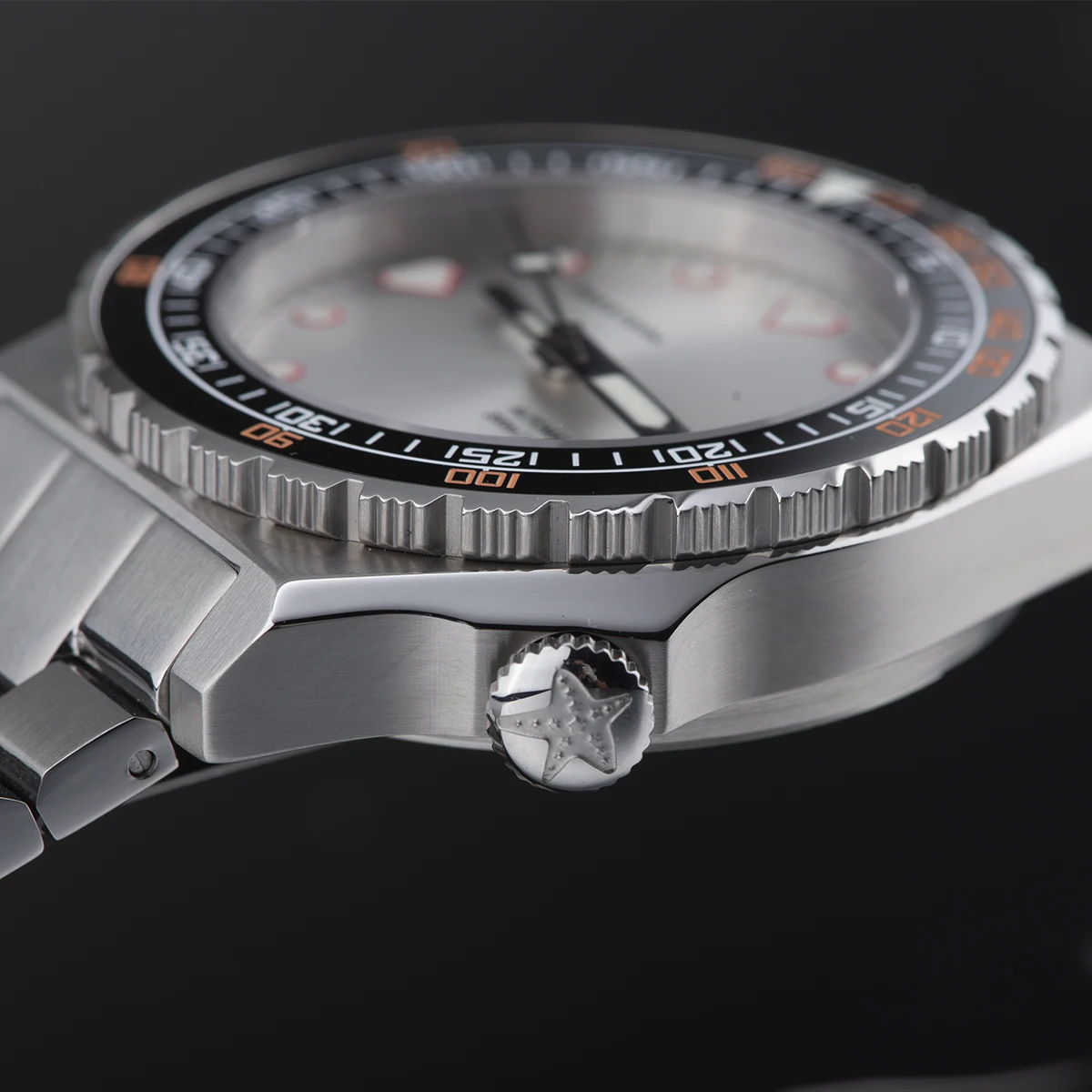
Today’s professional specification dive watches showcase just how far bezel technology has advanced, balancing traditional functionality with cutting-edge materials and manufacturing techniques.
Water Resistance: The Central Challenge
At its core, a dive watch must solve one fundamental problem: keeping water out while maintaining functionality under pressure. This challenge has driven some of watchmaking’s most significant innovations.
Evolving Sealing Technologies
Early water-resistant watches relied on tight-fitting case components and basic gaskets. Modern dive watches employ sophisticated sealing systems including:
- Multiple specialized O-rings made from advanced synthetic compounds
- Precisely engineered crown tubes with multiple sealing points
- Case designs specifically calculated to withstand external pressure
- Threaded case backs with compression gaskets vs. snap-on designs
The development of the screw-down crown represented a pivotal advancement. This mechanism creates a watertight seal when closed, protecting the most vulnerable entry point in the watch case during submersion.
Depth Ratings and Standards
| Rating | Practical Use | Testing Requirements |
|---|---|---|
| 100m/330ft | Swimming, snorkeling | Static pressure testing |
| 200m/660ft | Recreational diving | Static pressure + water resistance tests |
| 300m+/1000ft+ | Professional diving | Comprehensive testing to ISO 6425 standard |
| 1000m+/3300ft+ | Saturation diving | Extreme pressure testing, helium valves |
The ISO 6425 standard established in 1996 brought consistency to dive watch certification. To earn this designation, watches must undergo rigorous testing beyond simple pressure tests, including thermal shock, magnetic resistance, and actual underwater functionality verification.
Modern engineering has pushed depth ratings to extreme levels. Watches like the Rolex Deepsea Challenge (certified to 11,000m) demonstrate technological capability far beyond practical human diving limits. These achievements in underwater watch engineering milestones showcase watchmaking’s ongoing pursuit of overcoming the fundamental challenge of water resistance.
Case Materials: From Steel to Exotic Alloys
The evolution of dive watch case materials reflects a constant search for the perfect balance of durability, corrosion resistance, weight, and aesthetics. Each material brings distinct advantages and compromises to underwater timekeeping.
Stainless Steel: The Enduring Standard
Stainless steel remains the predominant case material for good reason. Its combination of strength, corrosion resistance, and relative affordability makes it ideal for dive watches. Modern steel alloys like 316L provide exceptional saltwater resistance, while being relatively easy to machine and finish to high standards.
Titanium: The Lightweight Alternative
Titanium revolutionized dive watches when it entered the horological world. Approximately 45% lighter than steel with superior corrosion resistance, it delivers exceptional comfort during extended wear – particularly valuable for larger professional dive watches. The material’s natural slate-gray appearance also provides a distinctive aesthetic. However, titanium scratches more easily than steel and presents manufacturing challenges due to its hardness.
Bronze: The Living Material
Bronze has gained significant popularity for its unique property of developing a natural patina over time. This gradual transformation creates a personalized appearance reflecting the owner’s wearing patterns and environments. The material’s excellent corrosion resistance to seawater (it develops a protective surface layer) connects authentically to maritime traditions. Our bronze automatic watches showcase this material’s distinctive character.
Modern Composites and Ceramics
Recent innovations include full ceramic cases offering unprecedented scratch resistance, carbon fiber composites providing extraordinary strength-to-weight ratios, and proprietary alloys combining multiple metals for optimized properties.
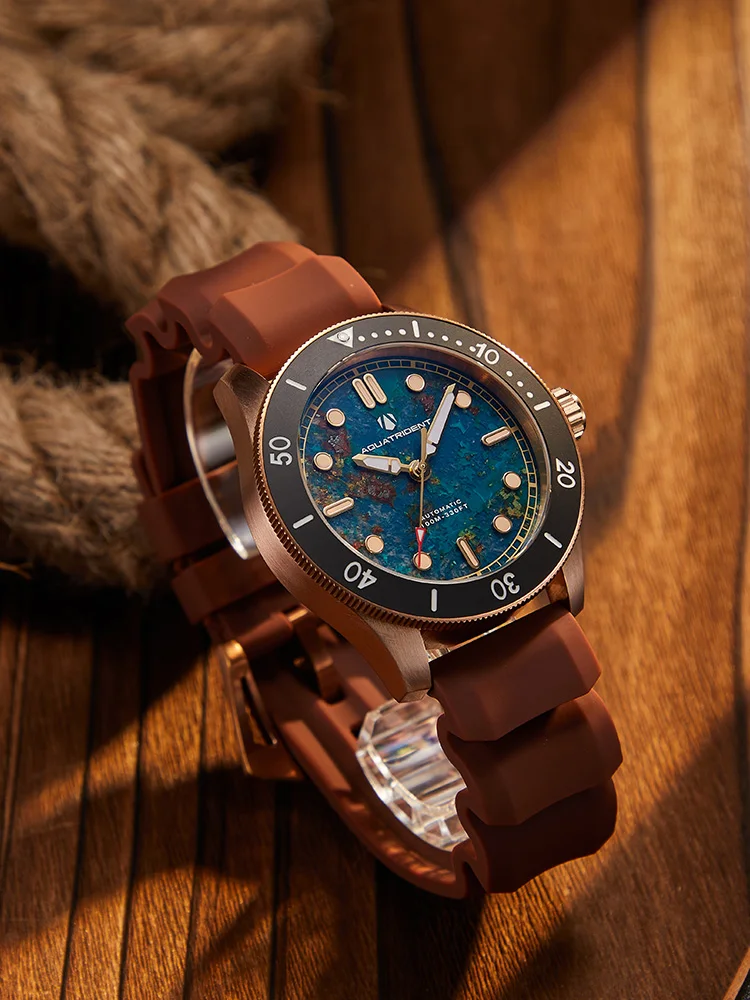
Each material choice significantly impacts a dive watch’s performance and character. While steel represents the versatile standard, alternatives like titanium automatic watches offer specialized benefits for specific diving environments and personal preferences.
Automatic Chronograph Watches, Classic Style Dive Watches
$3,053.06 Select options This product has multiple variants. The options may be chosen on the product pageBronze Automatic Watches, Military Inspired Automatic Watches, Professional Spec Dive Watches
Price range: $1,442.21 through $1,442.82 Select options This product has multiple variants. The options may be chosen on the product pageProfessional Spec Dive Watches, Titanium Automatic Watches
$574.74 Select options This product has multiple variants. The options may be chosen on the product pageClassic Automatic Dress Watches, GMT Automatic Watches, GMT Dive Watches
Price range: $468.93 through $552.94 Select options This product has multiple variants. The options may be chosen on the product pageDay Date Automatic Watches, Professional Spec Dive Watches
Price range: $751.60 through $790.26 Select options This product has multiple variants. The options may be chosen on the product pageClassic Automatic Dress Watches, Classic Style Dive Watches
Price range: $742.56 through $1,099.56 Select options This product has multiple variants. The options may be chosen on the product page
The Evolution of Luminous Technology
Visibility underwater is critical for diver safety, making the evolution of luminous technology a fascinating chapter in dive watch development. The ability to read time in dark underwater environments has progressed dramatically from dangerous beginnings to today’s sophisticated solutions.
The Radioactive Era
Early dive watches utilized radium paint for its powerful, continuous luminescence. While extraordinarily effective, radium’s dangerous radioactivity became increasingly apparent. The industry transitioned to tritium in the 1960s – still radioactive but significantly safer with a shorter half-life. These materials glowed constantly without requiring light exposure, making them ideal for prolonged underwater use.
The Photoluminescent Revolution
Environmental and health concerns eventually led to the development of non-radioactive alternatives. The 1990s saw Super-LumiNova emerge as the industry standard – a strontium aluminate-based compound that stores light energy and releases it gradually. This technology requires “charging” through exposure to light but contains no radioactive elements.
Manufacturers have since developed proprietary formulations with enhanced performance:
– Seiko’s LumiBrite offers exceptional brightness and longevity
– Rolex’s Chromalight produces a distinctive blue glow claimed to be more visible underwater
– Various “X1” and next-generation luminous materials provide significantly improved performance
Modern Applications
Today’s luminous technology extends beyond simple markers and hands. Innovations include:
– Fully luminous dials for maximum readability
– Illuminated bezels for timing reference in complete darkness
– Layered luminous elements creating depth and enhanced visibility
– Multiple color applications helping distinguish between different indicators
The heritage and evolution of dive watches shows how this seemingly simple feature has undergone continuous refinement to enhance underwater safety and functionality.
Crystal Technologies: The Path to Unbreakable Clarity
The watch crystal serves as the primary viewport to the dial while forming a critical part of the water-resistant system. Its evolution represents a continuous search for the perfect balance between clarity, durability, and pressure resistance.
Acrylic: The Pioneer Material
Early dive watches utilized acrylic crystals (also called plexiglass or hesalite). This plastic-based material offered excellent shock resistance – crucial for the bumps and impacts common in diving environments. While prone to scratching, acrylic could be easily polished to restore clarity. Its ability to withstand pressure without shattering made it the reliable choice for early underwater timepieces.
Mineral Glass: The Middle Ground
Mineral glass emerged as a harder alternative to acrylic, offering improved scratch resistance while maintaining reasonable impact protection. Created through heat-treating standard glass, it represented a compromise between traditional acrylic and premium options. Many mid-range dive watches still employ mineral crystals for their balanced properties.
Sapphire: The Modern Standard
Synthetic sapphire crystal has become the definitive premium choice for contemporary dive watches. With a hardness of 9 on the Mohs scale (diamond is 10), it offers nearly unscratchable performance. Modern manufacturing techniques have addressed sapphire’s primary weaknesses:
– Anti-reflective coatings improve underwater visibility
– Thickness calculations optimize pressure resistance
– Slightly domed profiles enhance strength while reducing distortion
Crystal Shapes and Pressure Resistance
Crystal shape significantly impacts water resistance. Flat crystals offer clean aesthetics but concentrate pressure at their center. Domed crystals distribute pressure more evenly, with traditional “box” sapphire designs providing exceptional depth capacity. The engineering behind adventure watch cases demonstrates how crystal design integrates with overall case architecture to enhance performance.
The comparison table below highlights the key differences between crystal materials:
| Feature | Acrylic | Mineral | Sapphire |
|---|---|---|---|
| Scratch Resistance | Poor | Good | Excellent |
| Impact Resistance | Excellent | Fair | Good |
| Pressure Resistance | Good | Good | Excellent |
| Weight | Light | Medium | Heavy |
| Cost | Low | Medium | High |
The Helium Release Valve: A Specialized Innovation
One of the most specialized features in dive watch technology addresses a problem unknown to recreational divers but critical for professional saturation diving – helium molecule infiltration.
The Saturation Diving Challenge
Professional divers working at extreme depths often live in pressurized habitats for days or weeks, breathing mixed gas atmospheres containing helium. These tiny helium molecules can penetrate watch seals that easily block water. During decompression, these trapped helium molecules expand, creating internal pressure that can force watch crystals to pop out – a phenomenon first observed during commercial diving operations in the 1960s.
The Automatic Helium Escape Valve
Rolex and Doxa pioneered the first solution – a one-way valve that automatically releases pressure when it exceeds a certain threshold. This small component, typically visible as a recessed circle on the case side, allows helium molecules to escape during decompression while maintaining water resistance during normal operation.
Manual Helium Release Systems
An alternative approach developed by Seiko involves a manually operated crown that divers can unscrew during decompression phases. This system eliminates a potential failure point in the case but requires diver intervention.
Necessity or Marketing?
A fascinating debate surrounds helium release valves in modern watches. While essential for the tiny percentage of professional saturation divers, they appear in many watches never destined for such extreme conditions. Some manufacturers have developed alternative solutions, including specially engineered case designs with reinforced seals that prevent helium penetration altogether.
For most recreational divers, the helium release valve represents impressive engineering rather than practical necessity. However, these innovations showcase the commitment to solving specialized challenges in the automatic dive watch world, even for extreme edge cases.
The Quartz Revolution and Digital Innovations
The introduction of quartz technology in the 1970s fundamentally transformed the dive watch landscape, bringing unprecedented accuracy, reliability, and new capabilities to underwater timekeeping.
Quartz Disruption in Diving Watches
While traditional mechanical dive watches remained popular, quartz movements offered distinct advantages underwater:
– Superior timekeeping accuracy (crucial for dive timing)
– Reduced maintenance requirements
– Enhanced shock resistance
– Lower production costs enabling more accessible pricing
Innovative hybrid designs soon emerged. The Seiko H558 “Arnie” combined analog display with digital features, delivering traditional dive watch aesthetics alongside advanced functionality. This multi-functionality approach would define a new category of professional diving instruments.
The Integration of Sensors
The 1985 Citizen Aqualand marked a revolution by incorporating an electronic depth gauge directly into a dive watch. This breakthrough transformed the wristwatch from a passive timing device into an active measurement instrument. Subsequent developments added:
– Temperature sensors
– Electronic compasses
– Dive time calculators
– Ascent rate warnings
The Dive Computer Convergence
As digital technology advanced, the line between dive watches and dive computers began to blur. Modern smart diving watches now incorporate:
– Full decompression algorithms
– Digital logbook features
– Wireless air integration
– GPS location tracking
– Bluetooth connectivity for dive planning and post-dive analysis
Despite these technological advances, traditional analog dive watches remain popular both for their reliability as backup instruments and their connection to the rich technical journey of dive watch evolution. Many divers appreciate the mechanical simplicity that functions independently of batteries and electronics.
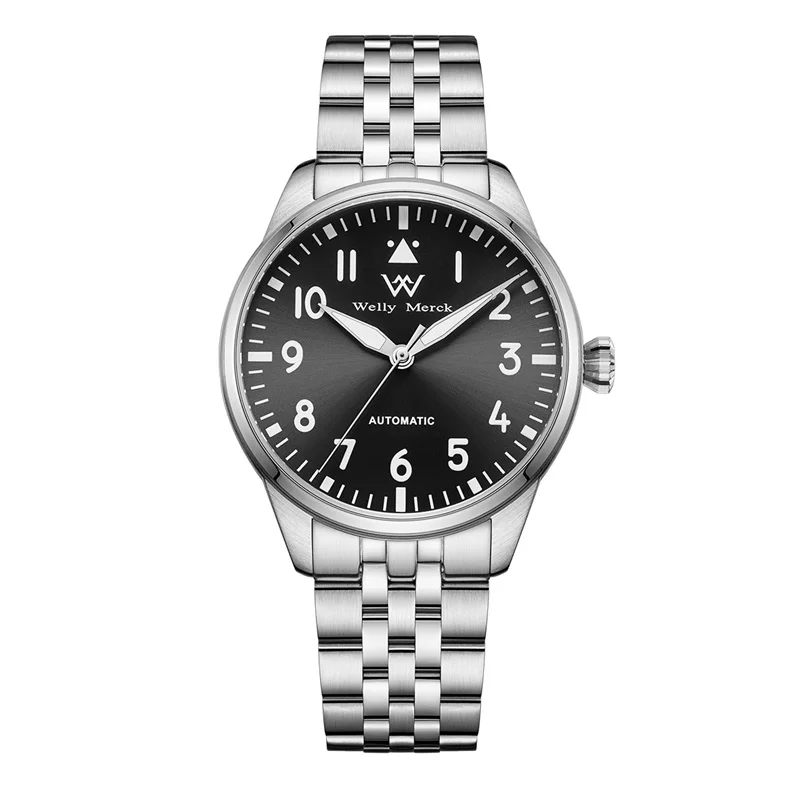
The Modern Balance: Tradition and Innovation
Today’s dive watch market reflects a fascinating tension between heritage and cutting-edge technology. Modern timepieces must satisfy both practical underwater requirements and increasingly sophisticated consumer expectations.
Professional Tools and Luxury Objects
Contemporary dive watches span an unprecedented range of purposes:
– Professional instruments designed for actual underwater use
– Versatile sports watches suitable for all activities
– Luxury statements that reference diving heritage
The ISO 6425 standard continues to provide an objective benchmark for true diving capability. This certification requires rigorous testing beyond simple water resistance, including resistance to external forces, magnetic fields, shock, and thermal variation. For serious underwater use, this standard remains the definitive mark of a genuine dive watch.
Sustainability Innovations
Environmental consciousness has entered the dive watch world with meaningful innovations:
– Recycled metals and plastics in cases and straps
– Solar power systems eliminating battery waste
– Straps made from reclaimed ocean plastic
– Manufacturing processes with reduced environmental impact
These approaches align perfectly with the diving community’s increasing focus on ocean conservation.
Balancing Traditional Craftsmanship with Technology
Even traditional mechanical dive watches continue to evolve with:
– Advanced movement architectures with extended power reserves
– Improved magnetic resistance for modern environments
– More precise manufacturing tolerances enhancing reliability
– Anti-corrosion treatments for extended underwater durability
Looking Forward
The future of dive watch technology likely involves further convergence between traditional timekeeping and digital capabilities. Concepts under development include:
– Advanced materials derived from aerospace applications
– Enhanced energy harvesting systems
– Improved legibility through new illumination techniques
– Smartwatch modules that can be integrated with traditional timepieces
For everyday versatility, GMT dive watches represent one of the most practical modern innovations, combining underwater capability with travel functionality. These GMT dive watches showcase how traditional dive watch design can incorporate additional complications while maintaining core functionality.
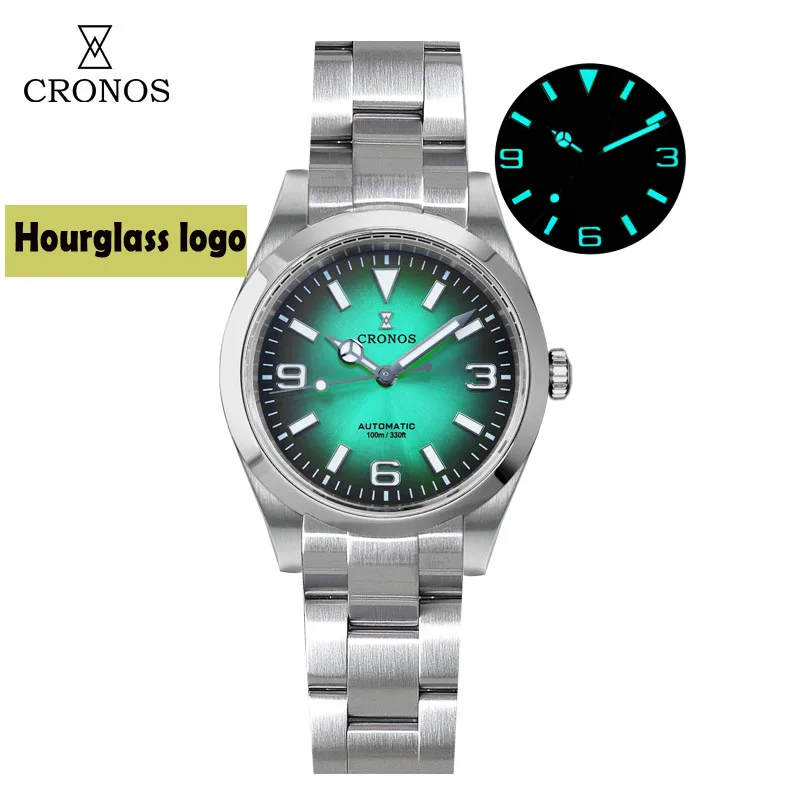
FAQs: Common Questions About Dive Watch Technology
Can I dive with any water-resistant watch?
No. Standard water-resistant watches (50-100m rating) are designed for surface water activities like swimming or snorkeling. True dive watches conform to specific standards (like ISO 6425) and include safety features such as unidirectional bezels, secure straps, and higher water resistance typically starting at 200m.
What does the 200m water resistance specification really mean?
A 200m water resistance rating indicates the watch has been tested to withstand pressure equivalent to that depth under static laboratory conditions. However, this doesn’t mean the watch can actually be taken to 200m underwater. The rating accounts for the additional pressure created by movement during swimming and the long-term degradation of seals. For recreational diving (typically limited to 40m), a 200m-rated watch provides an appropriate safety margin.
Which luminous materials provide the longest-lasting glow?
Modern Super-LumiNova and similar strontium aluminate compounds provide the longest-lasting non-radioactive luminescence, typically glowing for 8-10 hours with diminishing brightness. The specific formulation matters significantly – premium versions like “X1” grade can maintain visibility for most of a night. For constant luminescence without charging, watches with tritium gas tubes maintain consistent (though not extremely bright) illumination for decades through radioactive decay.
Which dive watch technologies are most important for recreational divers?
Recreational divers should prioritize: a reliable water resistance rating (200m minimum), a unidirectional timing bezel with clear markings, excellent luminosity for low-light conditions, and a secure strap system with extension for wetsuit use. Features like helium escape valves are unnecessary for recreational diving depths.
Do modern divers still need mechanical dive watches given the availability of dive computers?
While dive computers have become the primary underwater instrument for most divers, mechanical dive watches remain valuable as backup timing devices that function independently of batteries and electronics. Many diving organizations still recommend a redundant timing device. Additionally, the simplicity, reliability, and instant readability of a traditional dive watch complements the complex data provided by computers.

